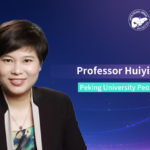
The 29th Annual Meeting of the European Hematology Association (EHA) was held from June 13 to 16, 2024, in Madrid, Spain. This conference, the largest international event in the field of hematology in Europe, attracts numerous renowned experts and scholars each year to share and discuss innovative ideas, the latest scientific research, and clinical findings in hematology. At this year's conference, the research team led by Professor Wenming Chen from Beijing Chao-Yang Hospital , Capital Medical University presented their findings in an oral presentation (S209) on the Phase II study of all-human BCMA-targeted CAR-T therapy for relapsed/refractory multiple myeloma (RRMM). To gain deeper insights into the latest research in the RRMM field, Oncology Frontier - Hematology Frontier invited Professor Wenming Chen for an in-depth discussion.Latest Data Release, LUMMICAR 1 Phase II Study Update
Oncology Frontier – Hematology Frontier: Can you introduce the study on all-human BCMA-targeted CAR-T cell therapy for relapsed/refractory multiple myeloma?
Professor Wenming Chen: Multiple myeloma is a common hematologic malignancy, and RRMM patients face particularly severe treatment challenges. These patients typically undergo multiple lines of therapy, experience multiple relapses, and some have high-risk genetic features, making treatment urgent. In this context, zevor-cel (zevorcabtagene autoleucel), an all-human B-cell maturation antigen (BCMA)-targeted CAR-T cell therapy jointly developed by CARsgen Therapeutics and Huadong Medicine, was introduced. LUMMICAR 1 is a Phase I/II clinical study conducted in China to evaluate the efficacy and safety of zevor-cel in treating RRMM.
At the 2021 ASH meeting, the one-year follow-up results of the LUMMICAR 1 Phase I study were announced, showing an overall response rate (ORR) of 100%, with a stringent complete response/complete response (sCR/CR) rate of 78.6%. At the 2023 ASH meeting, the three-year follow-up data of the last enrolled participant in the Phase I study were updated: the ORR and sCR/CR rate remained the same, with 92.9% of patients achieving very good partial response (VGPR) or better, and all sCR or CR patients reaching 10^-5 minimal residual disease (MRD) negativity. The median progression-free survival (PFS) for all patients was 25 months, and the 36-month overall survival (OS) rate was 92.9%.
The LUMMICAR 1 Phase II study involved over 20 hospitals in China and enrolled 102 RRMM patients, all of whom had received at least three lines of therapy, including at least one immunomodulator and one proteasome inhibitor. The study assessed the safety, efficacy, and pharmacokinetics of zevor-cel over 24 months. Preliminary results released at the 2022 ASH meeting showed an ORR of 92.2%, with VGPR or better in 85.3% of patients and an sCR/CR rate of 45.1%, demonstrating significant efficacy and tolerable safety in heavily pretreated RRMM patients.
At this EHA meeting, the latest data from the Phase II cohort with longer follow-up were presented, further observing the impact of prolonged zevor-cel treatment on the depth of disease response. Compared to previously reported data, the efficacy of zevor-cel was further validated. From December 1, 2020, to March 2, 2022, 102 patients (53.9% male) were enrolled, with a median age of 59.5 years (range: 38-75 years) and a median of four prior lines of therapy (range: 3-15 lines). Ninety-one patients (89.2%) were refractory to two classes of drugs, and 23 patients (22.5%) were refractory to three classes. Additionally, 61 patients (59.8%) had high-risk cytogenetic features.
As of October 25, 2023, the ORR was 92.2%, with 20 patients (19.6%) achieving VGPR. Seventy-three patients (71.6%) achieved sCR (n=69) or CR (n=4), all of whom reached MRD negativity at the 10^-5 level. With a median follow-up of 20.3 months (range: 0.4-27 months), data on duration of response (DOR), PFS, and OS were not yet mature. The median time to response and median time to achieve CR/sCR were 29.0 days (range: 26-93 days) and 146 days (range: 28-609 days), respectively.
No new safety signals emerged with extended follow-up, confirming the long-term safety of zevor-cel. Ninety-two patients (90.2%) experienced cytokine release syndrome (CRS), with only seven cases (6.9%) being grade 3/4. Two patients (2.0%) experienced grade 1 immune effector cell-associated neurotoxicity syndrome (ICANS). Twenty-eight patients (27.5%) had treatment-related grade ≥3 infections, and 27 patients (26.5%) had hypogammaglobulinemia of all grades, with no grade ≥3 neurotoxic events. One patient died of treatment-related pneumonia 149 days after receiving zevor-cel.
Overall, the longer follow-up data reaffirmed the depth and duration of response in RRMM patients treated with zevor-cel, demonstrating encouraging safety and broad application prospects.
Decoding Zevor-cel Mechanism Behind 92.2% ORR
Oncology Frontier – Hematology Frontier: Your study reported an impressive ORR of 92.2%. What do you think are the reasons behind such remarkable efficacy? What impact will this result have on the future treatment landscape?
Professor Wenming Chen: The efficacy of CAR-T therapy primarily depends on two factors: the binding affinity between the CAR and the BCMA antigen, and the structural characteristics of Zevor-cel. The tight binding improves efficacy, and the unique structure of Zevor-cel, with the 25C2 single-chain antibody, reduces dimer formation, leading to higher affinity and stability, enhancing safety. Additionally, the all-human structure of CAR-T cells has low immunogenicity, reducing the host immune rejection response, allowing longer survival and greater expansion in the body, further improving efficacy.
For RRMM patients with multiple relapses and drug resistance, traditional treatments often fail to extend survival and remission durations. Zevor-cel has changed this scenario, providing deep remission even for relapsed/refractory patients, indicating the possibility of longer survival. The success of Zevor-cel not only enhances efficacy but also offers a new treatment option for RRMM patients, significantly improving their quality of life and survival expectations, bringing new hope to the field of RRMM treatment.
National Rise, Creating a New Horizon in MM Treatment
Oncology Frontier – Hematology Frontier: Considering the current treatment challenges in multiple myeloma, what new strategies or drugs do you think are worth further exploration and research? What are your prospects for the future of multiple myeloma treatment?
Professor Wenming Chen: Despite the increasing variety of MM treatments, including proteasome inhibitors, immunomodulators, monoclonal antibodies, bispecific antibodies (BsAbs), and CAR-T cell therapy, MM remains incurable. Developing new drugs and mechanisms to achieve deeper remission and extend survival remains a research focus. Additionally, for high-risk patient groups, even with new drugs, their survival time remains short. Identifying these patients and providing more effective treatments is a current research challenge.
China’s trispecific antibody (TsAb) research is leading the international frontier, offering new perspectives and possibilities for MM treatment. Additionally, China’s new drug, Apatinib (CPT), is the world’s first and only approved DR4/DR5 agonist, showing significant efficacy in RRMM.
Looking back at past international conferences, Chinese scholars’ participation and influence have significantly increased. Over a decade ago, Chinese scholars were often only listeners, but now we actively participate in discussions and present our research, symbolizing the steady rise of China’s international medical research status. The rapid progress in domestic new drug development has been key to this transformation. In the past, China lagged in new drug development, but recent breakthroughs in BsAbs, CAR-T therapy, and monoclonal antibodies have brought us to or near the forefront of the field. These achievements not only enhance China’s voice at international medical conferences but also boost the national pride of Chinese doctors. Today, Chinese scholars earn respect and admiration from international peers at these conferences. This shift reflects the improved international research capabilities of Chinese scientists and clinicians and the recognition of China’s disease diagnosis and treatment capabilities. With continuous new drug developments and cooperation between domestic and international researchers, we expect significant improvements in MM treatment outcomes.
References:
- Wenming Chen, et al. Blood 2022;140 (S1):4564–4565
- Wenming Chen, et al. 2024 EHA Abstract S209.


